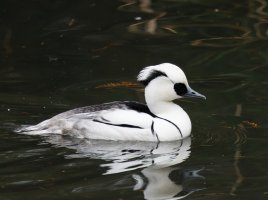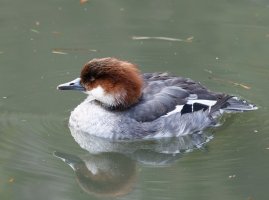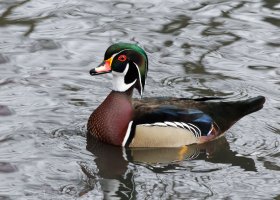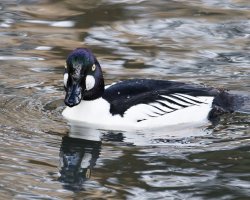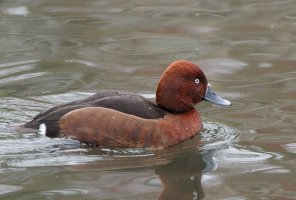You are using an out of date browser. It may not display this or other websites correctly.
You should upgrade or use an alternative browser.
You should upgrade or use an alternative browser.
Show your Bird Portraits
- Thread starter 1982chris911
- Start date
I find it too sharp for some lenses and so export without sharpening and just give a small tweak with Topaz. I like the bird!BTW: I found the new basic sharpening in PL6 (+1) a little bit to much for these light conditions (they just look non natural!). Decreasing the microcontrast didn't help... These are at +0.55 and look somewhat better (and still not what I want). Anyway - this is what I got yesterday. Today it was worst -I got nothing from the birds!
View attachment 207819View attachment 207820
Upvote
0
At a Wildfowl and Wetlands Trust reserve about 60 miles away. They have non-native birds there - as you know, I normally shoot only native birds that I come across opportunistically. The Goldeneye and Smew are native.Have these ducks been photographed near where you live? Nice diversity. Very nice pictures, Alan.
Upvote
0
Thanks. Just got a £65 fine for driving up the wrong road leaving there - the perils of using a ***.The journey was worth it. I really like your pictures.
Upvote
0
As an illustration to the "needless" overexposure problem discussed in another thread:
A goldcrest shot from less than 2 meters away (as I was busy enough to choose the position in which the branches would interfere the least, I had no time to perfect the exposure). EOS R5, 100-400L II at 400mm, Fv with 1/2000 shutter speed fixed, camera-picked f/6.7 and ISO 1600:
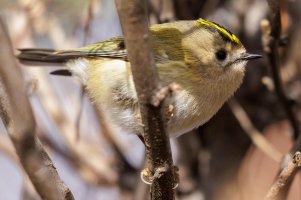
Some of the areas (such as the area under the wing at the left to the branch) are (theoretically) needlessly overexposed, given that I was shooting in the 14-bit shutter mode and could as well shoot at ISO 400 and then push by 2 stops without noticeable loss of DR.
Any suggestions how to choose the exposure on R5 in such situations (fast encounters with small birds in variable lighting)?
(BTW, no AI sharpening was used to make this picture. There were more than enough pixels on the bird)
A goldcrest shot from less than 2 meters away (as I was busy enough to choose the position in which the branches would interfere the least, I had no time to perfect the exposure). EOS R5, 100-400L II at 400mm, Fv with 1/2000 shutter speed fixed, camera-picked f/6.7 and ISO 1600:

Some of the areas (such as the area under the wing at the left to the branch) are (theoretically) needlessly overexposed, given that I was shooting in the 14-bit shutter mode and could as well shoot at ISO 400 and then push by 2 stops without noticeable loss of DR.
Any suggestions how to choose the exposure on R5 in such situations (fast encounters with small birds in variable lighting)?
(BTW, no AI sharpening was used to make this picture. There were more than enough pixels on the bird)
Upvote
0
You posted this in support of your postAs an illustration to the "needless" overexposure problem discussed in another thread:
A goldcrest shot from less than 2 meters away (as I was busy enough to choose the position in which the branches would interfere the least, I had no time to perfect the exposure). EOS R5, 100-400L II at 400mm, Fv with 1/2000 shutter speed fixed, camera-picked f/6.7 and ISO 1600:
View attachment 207865
Some of the areas (such as the area under the wing at the left to the branch) are (theoretically) needlessly overexposed, given that I was shooting in the 14-bit shutter mode and could as well shoot at ISO 400 and then push by 2 stops without noticeable loss of DR.
Any suggestions how to choose the exposure on R5 in such situations (fast encounters with small birds in variable lighting)?
(BTW, no AI sharpening was used to make this picture. There were more than enough pixels on the bird)
The answer to your question is to set your camera in advance of the shot, like underexposing by 0.5-1 ev. If you are not prepared then it might not be a keeper. The keeper rate for bird photography is not 100%, and you have to accept that, and that is part of the fun - it isn't easy to get the right shot and we have to work at it, and if was easy it would be boring apart from getting interesting shots for the record. By chance, I posted some shots of a Firecrest like yours about 3 weeks ago. Look at the file names of the images and you will see "+0.5" on them, which means I increased the ev in post by 0.5 as I had underexposed them. I hadn't sharpened or emphasised brightness or any colour, but bleached whites there weren't.I am personally concerned about white (or light-colored in general, or reflective) plumage of birds. Way too often even the most experienced bird photographers here on CR have it overexposed (and I myself have it overexposed almost every time). Given the short time to make a decision about the exposure before the bird flies away, it would be good if the camera sensor were ISO-invariant, and the camera's ISO setting only changed the viewfinder gain.
Show your Bird Portraits
Eisvogel bei erfolgreicher Jagd. Und Photograph bei erfolgreicher Jagd.
Upvote
0
You do have bleached whites in the background, which probably did the trick with the camera exposure meter, unless you were using fully manual exposure mode. Your duck pictures, in comparison, have quite a lot of whites with lost feather textures. I'm not saying that it makes them "non-keepers" (a "keeper" is subjective anyway), I'm asking for the techniques to make them even better, as the camera itself is obviously not a limitation here.The answer to your question is to set your camera in advance of the shot, like underexposing by 0.5-1 ev. If you are not prepared then it might not be a keeper. The keeper rate for bird photography is not 100%, and you have to accept that, and that is part of the fun - it isn't easy to get the right shot and we have to work at it, and if was easy it would be boring apart from getting interesting shots for the record. By chance, I posted some shots of a Firecrest like yours about 3 weeks ago. Look at the file names of the images and you will see "+0.5" on them, which means I increased the ev in post by 0.5 as I had underexposed them. I hadn't sharpened or emphasised brightness or any colour, but bleached whites there weren't.
Show your Bird Portraits
Eisvogel bei erfolgreicher Jagd. Und Photograph bei erfolgreicher Jagd.www.canonrumors.com
Upvote
0
"bleached whites in the background" of my Firecrest shots. Come off it - there must be something wrong with your eyesight - the highlights in the background are visibly grey even at +0.5ev in the previous crops and not white, and I'll prove they are not bleached. Top is the full shot before cropping as taken underexposed at iso 1250 - clearly grey background. Middle is the RAW dialed back -4ev: really very, very dark grey - if the highlights were bleached they would still be white. Bottom, the centre crop with the bird selectively increased exposure of 0.5. I can do the same with duck shots to show their plumage is not bleached. I chose to display them as they looked - I could easily have shown them with highlights artificially toned down.You do have bleached whites in the background, which probably did the trick with the camera exposure meter, unless you were using fully manual exposure mode. Your duck pictures, in comparison, have quite a lot of whites with lost feather textures. I'm not saying that it makes them "non-keepers" (a "keeper" is subjective anyway), I'm asking for the techniques to make them even better, as the camera itself is obviously not a limitation here.
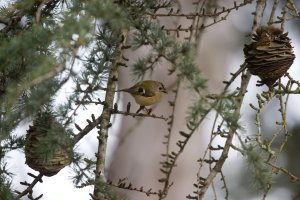
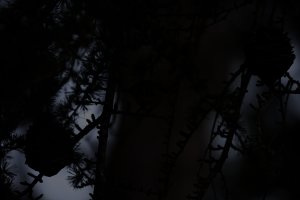
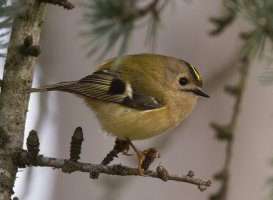
Upvote
0
..or with my Photoshop:"bleached whites in the background" of my Firecrest shots. Come off it - there must be something wrong with your eyesight
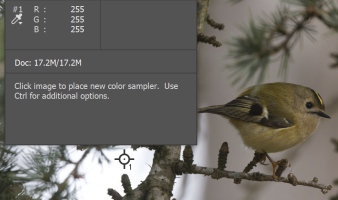
Anyway, no need to be defensive about it. My point is that if we can get this help from the camera unintendedly, we might be able to improve our workflow so that we don't need to guess so much on the exposure correction values. My question is how to do it efficiently in a tight time frame.
Good if so.I can do the same with duck shots to show their plumage is not bleached.
Upvote
0
In the specific shot the burned area is a very small percentage of the bird so in my opinion this is not a disaster.
Having said that I have some burned shots from the 7DII era that I have regretted overexposing them.
In fact sometimes i still use +1 or +2 when there are very dark areas mostly. But this is a trap because sometimes I have forgotten to reset them afterwards.
R5 D850 and D500 cameras are too good to have a problem with dark areas especially with DXO PL.
At least I have made a habit of using -2/3 or -1 when I shoot big white birds (like egrets or pelicans) in bright light.
Having said that I have some burned shots from the 7DII era that I have regretted overexposing them.
In fact sometimes i still use +1 or +2 when there are very dark areas mostly. But this is a trap because sometimes I have forgotten to reset them afterwards.
R5 D850 and D500 cameras are too good to have a problem with dark areas especially with DXO PL.
At least I have made a habit of using -2/3 or -1 when I shoot big white birds (like egrets or pelicans) in bright light.
Upvote
0
What it shows is the limited dynamic range of the PS color sampling tool. 255, the highest reading, is 8 bits...or with my Photoshop:
It's what I found too. I ceased to worry about underexposing when I went over to the D850 and D500, and was then delighted when I came back to the R5 and found it just as good.In the specific shot the burned area is a very small percentage of the bird so in my opinion this is not a disaster.
Having said that I have some burned shots from the 7DII era that I have regretted overexposing them.
In fact sometimes i still use +1 or +2 when there are very dark areas mostly. But this is a trap because sometimes I have forgotten to reset them afterwards.
R5 D850 and D500 cameras are too good to have a problem with dark areas especially with DXO PL.
At least I have made a habit of using -2/3 or -1 when I shoot big white birds (like egrets or pelicans) in bright light.
Upvote
0
I think the only thing I might add to this conversation is have you tried different metering modes? Say single point vs evaluative? Also I've found shooting in manual and setting ISO to auto, then using my control ring to dial down exposure if necessary works best for me.As an illustration to the "needless" overexposure problem discussed in another thread:
A goldcrest shot from less than 2 meters away (as I was busy enough to choose the position in which the branches would interfere the least, I had no time to perfect the exposure). EOS R5, 100-400L II at 400mm, Fv with 1/2000 shutter speed fixed, camera-picked f/6.7 and ISO 1600:
View attachment 207865
Some of the areas (such as the area under the wing at the left to the branch) are (theoretically) needlessly overexposed, given that I was shooting in the 14-bit shutter mode and could as well shoot at ISO 400 and then push by 2 stops without noticeable loss of DR.
Any suggestions how to choose the exposure on R5 in such situations (fast encounters with small birds in variable lighting)?
(BTW, no AI sharpening was used to make this picture. There were more than enough pixels on the bird)
Upvote
0
Similar threads
- Replies
- 118
- Views
- 97K


